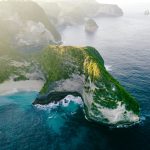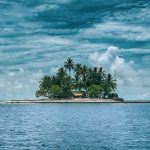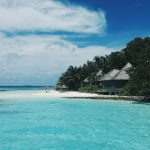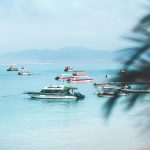Table of Contents
Beyond the crowd-filled waters of the Great Barrier Reef and Cozumel lie diving experiences so extraordinary they’re spoken about in reverent tones by those who’ve been. These five destinations for scuba diving offer underwater adventures that redefine what’s possible beneath the waves.
Raja Ampat: Indonesia’s Biodiversity Epicenter
In the remote waters of West Papua, Raja Ampat represents the pinnacle of marine biodiversity. Scientists have documented over 1,700 fish species and 600 coral species in these waters – the highest concentration of marine life on the planet.
What makes Raja Ampat extraordinary isn’t just the numbers but the accessibility of its wonders. Dive sites like “Melissa’s Garden” feature vast coral plateaus so dense with life that every square inch hosts multiple species. “Cape Kri” holds the world record for the most fish species counted on a single dive – 374 species identified in 80 minutes.
The region’s remoteness has preserved it from mass tourism but also makes it challenging to reach. Most divers arrive via liveaboard vessels that depart from Sorong, though a growing number of eco-resorts offer land-based operations. The best diving conditions occur from October to April when reduced rainfall improves visibility to 30+ meters.
The underwater topography provides experiences for every skill level. Beginners explore gentle reef slopes teeming with pygmy seahorses and walking sharks found nowhere else on Earth. Advanced divers tackle the legendary “Four Kings” pinnacles, where powerful currents attract massive pelagic schools and create the underwater equivalent of standing in a fish tornado.
Mozambique’s Quirimbas Archipelago: Africa’s Unspoiled Frontier
While Egypt’s Red Sea and Tanzania’s Zanzibar draw diving crowds, northern Mozambique’s Quirimbas Archipelago remains tantalizingly undeveloped. This 250km string of 32 coral islands offers pristine reefs, vertical drop-offs, and marine megafauna encounters that rival any in the world.
The signature experience here involves the resident population of manta rays. Unlike other famous manta destinations, Quirimbas offers year-round sightings, with cleaning stations where these massive rays hover motionless while smaller fish remove parasites. “Neptune’s Arm,” a two-mile coral reef formation that juts into the Mozambique Channel, attracts schools of gamefish so dense they block out the sun.
The region’s isolation has preserved both its marine environment and cultural heritage. Between dives, explorers visit islands with 16th-century Portuguese fortifications and traditional Kimwani fishing communities. The best conditions run from September to December, when whale sharks frequent the region during their annual migration.
Logistically, the Quirimbas requires commitment – limited flights reach Pemba, followed by boat transfers to the islands. This journey deters casual divers, preserving the underwater environment for those willing to make the effort. The reward? Dive sites where yours might be the only bubbles for miles.
Socorro Islands: Mexico’s Giant Pelagic Playground
Six hundred kilometers off Mexico’s Baja Peninsula, the Socorro Islands (officially Revillagigedo Archipelago) host some of the world’s most thrilling big animal encounters. This volcanic island group serves as a meeting point for oceanic giants migrating across the eastern Pacific.
What distinguishes Socorro is the interactive nature of these encounters. Resident populations of giant manta rays with wingspans exceeding six meters approach divers with surprising curiosity. During the winter season (November to May), up to seven species of sharks converge here, including schooling hammerheads, silky sharks, and the occasional tiger shark.
The true stars of Socorro, however, are the surprisingly playful populations of bottlenose dolphins and false killer whales that regularly initiate extended encounters with divers. These highly intelligent mammals often spend entire dives circling and examining humans with obvious curiosity.
The islands’ remote location requires a serious commitment – access is exclusively via liveaboard boats that depart from Cabo San Lucas, with journeys taking 24+ hours each way. The crossing can challenge those prone to seasickness, but the rewards justify the discomfort. The extreme isolation has created a preserved underwater environment that offers a glimpse of how oceans functioned before industrial fishing.
Aldabra Atoll: Seychelles’ Living Fossil
While the inner Seychelles islands attract honeymooners to their granite beaches, the distant Aldabra Atoll offers diving that exists nowhere else on Earth. This raised coral atoll – the world’s second-largest – forms a nearly enclosed lagoon system that has evolved in isolation for thousands of years.
What makes Aldabra extraordinary is its pristine condition and unique marine life adaptations. The atoll’s isolation and protected status (it’s a UNESCO World Heritage site) have preserved an ecosystem that has remained largely unchanged since prehistoric times. The lagoon entrance features a dive site called “The Washing Machine,” where powerful tidal exchanges create a roller-coaster drift dive through coral canyons.
Aldabra hosts several marine species with behaviors documented nowhere else, including bump head parrotfish that gather in schools exceeding 100 individuals – a formation rarely seen since their worldwide decline from overfishing. The atoll also supports the largest population of mature coconut crabs on Earth, creating the unusual experience of diving with giant crustaceans that both swim and climb trees.
Reaching Aldabra requires special arrangements through the Seychelles Islands Foundation, which manages visitor permits. Most divers arrive via specialized expedition vessels that visit during the calm season between November and April. The journey’s difficulty ensures that only a few hundred divers experience these waters annually.
The Mergui Archipelago: Myanmar’s Time Capsule
Only opened to foreign visitors in 1997, Myanmar’s Mergui (Myeik) Archipelago spans 800 largely uninhabited islands scattered across 12,000 square kilometers of the Andaman Sea. This region offers diving into ecosystems that have essentially missed the last 50 years of human impact.
What distinguishes Mergui is the combination of pristine hard coral reefs and dramatic underwater topography. Sites like “Black Rock” feature undersea pinnacles that rise from depths of 300 meters to near the surface, creating vertical walls covered in sea fans and soft corals. These structures attract pelagic visitors ranging from whale sharks to scalloped hammerheads.
Between dives, explorers encounter the semi-nomadic Moken “sea gypsies,” who maintain traditional boat-dwelling lifestyles and possess remarkable free-diving abilities. Their intimate knowledge of the archipelago has informed the discovery of many premier dive sites.
The region remains lightly visited, with access primarily via liveaboards departing from Thailand’s Ranong port or, more recently, from Myanmar’s redeveloping southern ports. The optimal diving season runs from December through April when clear skies and calm seas provide visibility exceeding 30 meters.
Preparing for Remote Diving Expeditions
These destinations demand more preparation than conventional dive vacations. All require advanced certification at minimum, with technical training beneficial for maximizing experiences. Essential equipment extends beyond standard dive gear to include surface marker buoys, emergency signaling devices, and marine identification guides for documenting encounters with rare species.
Marine conservation awareness becomes critical in such pristine environments. Many operators enforce strict guidelines regarding underwater conduct, including bans on gloves (preventing coral touching), requirements for non-coral-damaging body positioning, and protocols for responsible wildlife encounters.
The common thread connecting these destinations is their remoteness – the very isolation that has preserved their underwater treasures also demands self-sufficiency from visitors. Divers must be comfortable with limited medical facilities, variable weather conditions, and itinerary flexibility.
For those willing to venture beyond the mainstream, these five destinations offer marine experiences that recalibrate expectations about what’s possible underwater. They represent diving’s final frontiers – places where the ocean still functions as it did centuries ago, where human presence remains minimal, and where every dive brings the possibility of witnessing something few have ever seen.

I’m Garrett, a seasoned photojournalist with a passion for uncovering the world’s hidden treasures. My journey is fueled by a deep curiosity for diverse cultures and breathtaking landscapes. When I’m not behind the lens capturing the world’s wonders, you can find me exploring underwater realms or sharing my passion for discovery with my two adventurous children.




